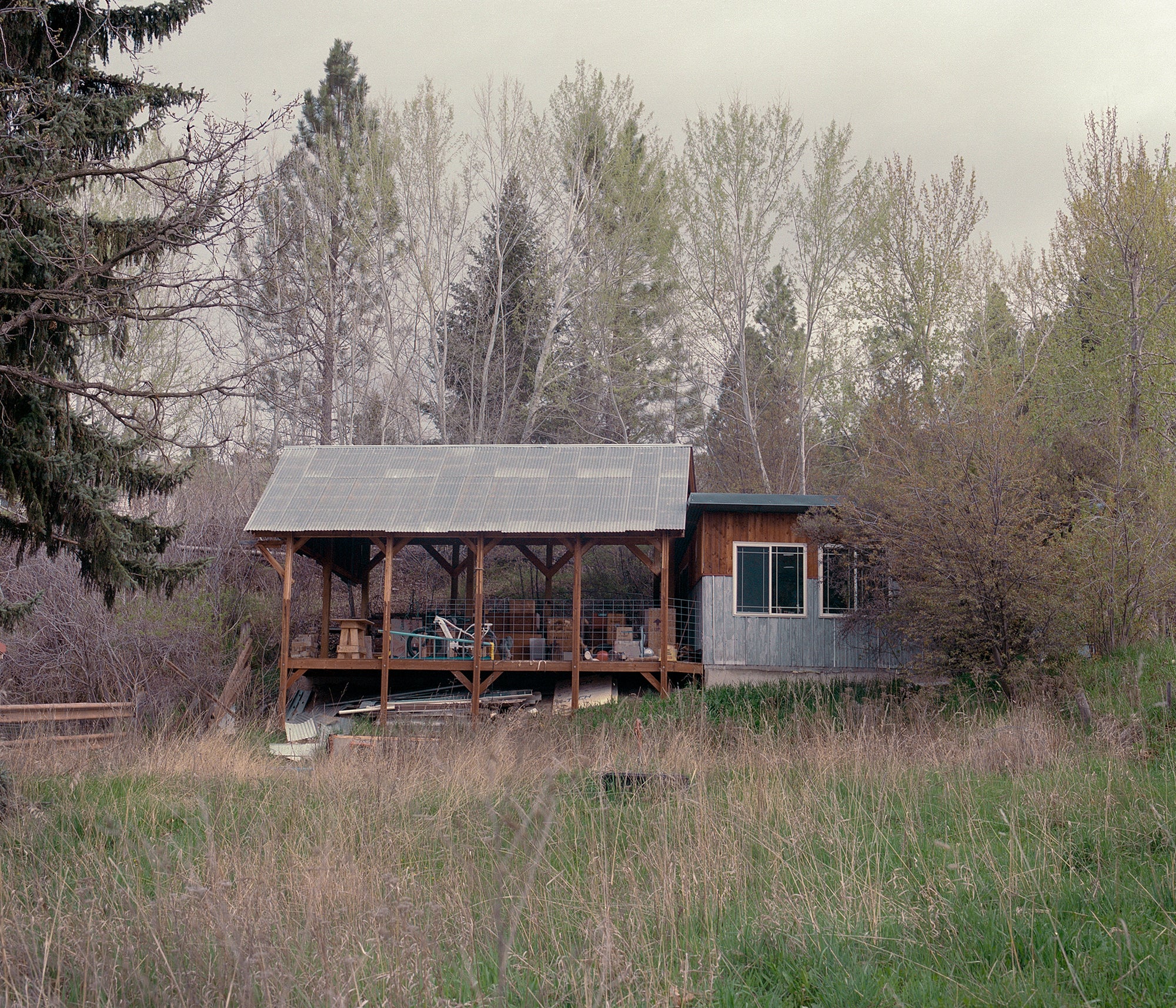
Chronicle 005 - Trey HIll
Last spring, in the foothills of Missoula, we visited Trey Hill at his picturesque studio, which looks exactly what you might think when you think of an artist's space in Montana. There are the mountains, the chickens, the soft country light, the clay dust settling everywhere, and the warm-hearted, affable sculptor in the midst of it.
But there is an integral part you will not imagine, and that is because Hill has spent his career paying attention to what no one pays attention to: the hidden structures that support us. We mean this literally—his otherworldly sculptures take their shape from the little supports that hold up those famous marble sculptures of Antiquity—but we also mean this figuratively, because Hill likes to speak of community, of building one here in Montana, and of the ways we can come together to help each other out.
Medium format photography by Colton Rothwell

Placed: Give us a brief history of these pieces.
Trey Hill: I was thinking about attraction and seduction and beauty and sexuality. And I was thinking there's so much pop culture that I could pull from, but decided to try and go the other way.
So I went back and I looked at all these really stunning, figurative stone pieces. There were all these beautiful carved nudes.

PL: Like in the classical antiquity period?
TH: Yeah. If you look at tons of classical Roman and Greek stone sculptures, a lot of them have these little trees that are carved into the stone and that are there to keep the pieces from breaking off at the ankles [In the Renaissance era, Michelangelo's David is a good example]. They are carved in a way that they are secondary. They are carved rougher than the main crafted part of the statue. They are made for you to look at and look past. But what they are doing is holding the whole structure together. There is something unseen and unnoticed.
They're kind of an underpinning to all this beauty. And I was like, Oh my God, this might be the thing I'm trying to find. I am paying attention to the moments where we are part of that support for each other, the best of humanity. In this divided world, we can stand up and support each other. It's a simple thing that we can all do.
So I’ve separated that one element from these classical pieces, and am shining light on it, and letting that be the leading player of that world.

PL: I love that. So you’re finding a form and working towards making it perfect, perhaps for the rest of your life. It’s a very powerful thing.
TH: It’s a lucky thing to find. I think artists are often searching for that.
These sculptures, they’re all different but similar. They change every time. I like that challenge: How do I resolve this in space? And some of them don’t work and I have to rebuilt it. Some of them feel more figurative. This one’s a beefcake. This one looks like coral. This is a stumpy one…

PL: How did you arrive out here in Montana?
TH: I came out to Montana about 20 years ago to be a resident at the Archie Bray Foundation. I left for about 5 years to do some national and international residencies. Then I moved back to Missoula to teach at the University of Montana where I teach ceramics and sculpture.

PL: Some of the artists we’ve done studio visits with have expressed the difficulty of selling art in Montana. Has this been your experience?
TH: I'm having a different experience. The state’s booming. All these people coming in from out of state. I think it takes them a little bit to realize there are people making work in Montana because they're just not used to it. It takes them a while to find artists who they can relate to but then they find them.
They are also coming from areas with a bigger art market and a bigger art scene. They're actually used to buying some kind of substantial pieces from galleries and from artists. The majority of the work I sell in the state are from people who have moved here. They kind of hang out for a little bit, look around, and they're trying to find a gallery that they can connect with.
They're interested in large scale work. They'll watch for a little bit—collectors who aren’t in a hurry will watch. People will say, send me work as you get it done and then I'll send them pictures. So they'll watch for a while.

TH: I think that's interesting too. Every gallery now from blue chip to brand new is showing good ceramics. It’s out there in a way that it wasn't twenty years ago. I'd say in the last ten to five years it started to happen. Even in Los Angeles, all those good galleries are showing lots of clay. So it trickles down into the collector's mindset. Clay's pretty hot right now.
TH: In the past, it would almost be like: OK, well, there's x amount of people in town and now they have my work, so it's over. Now there’s just so many new people that it's pretty spectacular and I think it's endless.

